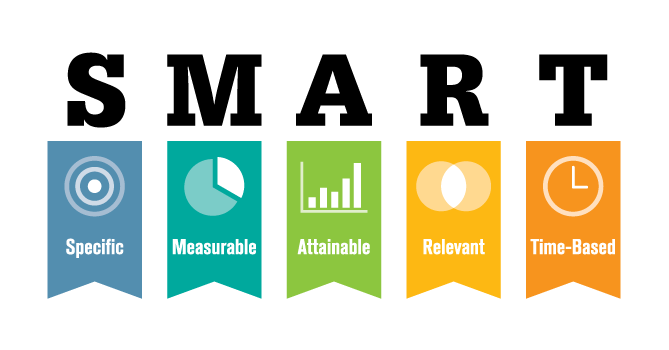Considering its importance, objective-setting is a term we tend to throw around loosely. Setting objectives is the first step in most how-to blogs, the first chapter in most textbooks, and probably the most misunderstood of both.
Training objectives are no different. Most of the time, we think up a few things at the beginning and never think about them again. The objectives of a training program should not only serve as a guide for the training program but also act as a yardstick to measure if we are achieving our goals. Is our training program delivering what it is supposed to?
Only if we have set clear, needs-focused, connected, and SMART objectives will we be able to weigh our training program’s effectiveness. Post-training, we can see clearly if our objectives were met and make important decisions about how to adjust training programs to be more effective. Let’s get real about training objectives and dive deep into what it takes to set great training objectives!
What are training objectives?
Training objectives are the desired outcomes of a training program. They are the goals that you set before you start out and what you hope to achieve through your training and development program.
Objectives of training and development programs should ensure the training provides value to employees and should focus on improving workplace skills. They should be clearly defined and relate directly to career advancement. Mastering a specific skill, learning a new skill, or obtaining a particular credential are examples.
The benefits of setting training objectives
There are numerous benefits to effective training-program objective-setting, including the following:
- A faster and more efficient training process
- Giving structure to the program and guiding and directing the planning process
- Ensuring easier analysis of training program ROI and overall effectiveness
- Improved skill sets and a better end product
- Aiding in the decision-making process post-training, along with providing the ability to better strategize around the company’s training and development program
So, why set training objectives? In order to effectively manage your training program, you need it to be structured and you need some form of guidance. Secondly, you need to monitor a training program’s effectiveness so you can make sure it’s delivering what it’s supposed to.
Why is this so important? For many reasons, one being that training programs cost money, so you want to make sure your resources are well allocated.
Elements of effective training-program objectives
Training-program objectives should take certain elements into account in order to be effective. They must set out a roadmap that will ensure employees gain maximum benefit from training and that company resources are well allocated. In order to set proper training objectives, we first need to look at the overall training process and where objective-setting fits in.
The training process consists of four key elements:
- Training Need Analysis: Identify a need.
- Training Objectives: Set objectives.
- Training Delivery: Find the best method to conduct the training. You could use the 5 Ws of eLearning to guide the program design.
- Training Evaluation: Determine if objectives have been met and find the path forward.
Here are a few of the elements to consider when starting out on your objective setting journey:
Performance
Performance is a vital part of training. After the employee has completed training, they must not only have gained or mastered a skill, but this must reflect in their work performance. The training must translate into improved job performance. This should be taken into account when setting training objectives.
Conditions
When setting training objectives, you need to take the practical side into account. How will you deliver the training, where will you conduct sessions, and what resources will you tap into? eLearning is a great option here. With improved user experience and well-researched, interactive learning methods, you are setting your program up for success.
Criteria
When setting training objectives, the evaluation criteria should be thought of. What is an acceptable level of proficiency, and what improvements in quality of performance are expected after the training is complete?
How to create the best training objectives
Training objectives must be:
1. Aligned with your organization’s strategy
It is always a good idea to use your company strategy to guide what you do. This is no different for your training and development program. Align your training objectives with your company’s values and goals, and they will align better with your company culture and be better geared for success.
2. Clear, short, and simple
Make sure they are clearly defined and easily understandable. They must be to the point—one or two sentences each will work fine. A great example: “On completion of the training program (time frame), managers (audience) will be able to communicate (action verb) in a more productive and motivational way (details).”
3. Specific
They must directly relate to a need or pain point. This will have been determined in the needs-analysis stage. They should be meaningful and relevant to the employee’s job role.
4. Realistic
It’s great to be ambitious, but we don’t want to set our employees up to fail. Training objectives must be achievable and enable confident attainment. You will be able to tell if your objective meets this requirement during your evaluation stage. Are you experiencing high failure rates? You are expecting too much and need to take a step back and be more realistic. Are your employees bored or disinterested during training? Step it up a bit and challenge them.
5. Use the right verb
Training objectives should motivate employees and spark interest. They should give clarity. The verb you use must be an action verb used with good describing words. An action verb is measurable and specific, which will provoke more interest than a generic verb.
For example:
- “Managers will learn how to delegate.”
- “Managers will be able to apply effective delegation techniques.”
Point 2 is much more appealing and clear.
6. SMART
All objectives must always be SMART which stands for Specific, Measurable, Achievable, Relevant, and Time-Bound. We have mentioned these aspects above, but this acronym is a great way to remember them. Get SMART about your training objective-setting!

Focus on the objective, not the obstacle
Once you have set your new objectives, there is nothing left to do but incorporate your objectives into your courses. You may hit obstacles along the way, but focusing on your objectives and how to achieve them will ensure success for your training program.






